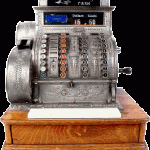With the National Hockey League lockout now well into its second 100 days, and with chances of there being a 2012-13 season looking more and more remote, some NHL owners are apparently thinking about expanding the number of teams in the league from 30 to 32. The most frequently mentioned locations for new teams are Seattle and Quebec. Apparently, the idea is that the labor dispute will be settled eventually, and that current owners could make up for some of their losses by dividing up sizeable expansion fees from the two new teams. In reality, the best thing for the NHL would be to contract back to 21 teams, the number it had between 1979 and 1991, which is increasingly looking like the league’s golden age. In 1979, the then 17-team NHL agreed to add four teams from its former competitor, the World Hockey Association. For the next twelve seasons, the league played with three 5-team and one 6-team divisions. The growing popularity of NHL hockey in the early 1990’s led the league to somewhat ambitiously add nine teams between 1991 and 2000. In retrospect, this decision to expand the league into new markets in the southern half of the United States is a major source of the league’s current financial problems. The league simply has too many teams and too many teams in markets that will not support major league hockey. How would one decide which nine teams to jettison and which 21 to keep? The goal could be reached by simply eliminating the nine post-1991 expansion teams, but that would overlook the fact that a few of the expansion teams—the San Jose Sharks, the Ottawa Senators, and the Minnesota Wild—are among the league’s more financially successful teams. Fortunately, the recent Forbes Magazine franchise value evaluations provide the data that makes such a determination fairly simple. According to Forbes, there are currently 20 NHL franchises with valuations of more than US $200 million, ranging from the Toronto Maple Leafs (worth an estimated $1b) to the Winnipeg Jets (worth $200m). Similarly, there were 20 franchises that had revenues during the 2011-12 season in excess of $95 million, ranging from Toronto ($200m) to Buffalo ($95m). A total of 21 teams appear on these two lists. Nineteen are on both, with only Colorado (21st in terms of revenue) and Buffalo (22nd in terms of estimated value) appearing on one list but not the other. The nine franchises that appear on neither of these lists are the logical ones to eliminate. The nine “to be folded” franchises are, in descending order of value according to the Forbes estimates: Anaheim Ducks, Tampa Bay Lightning, Florida Panthers, Nashville Predators, Carolina Hurricane, New York Islanders, Columbus Blue Jackets, Phoenix Roadrunners, and St. Louis Blues. Six of the nine are post-1991 expansions teams, and Phoenix is a transformed beyond recognition version of the original Winnipeg Jets, since restored to Winnipeg in the form of the transferred Atlanta Thrashers. The other two teams, the New York Islanders and…

